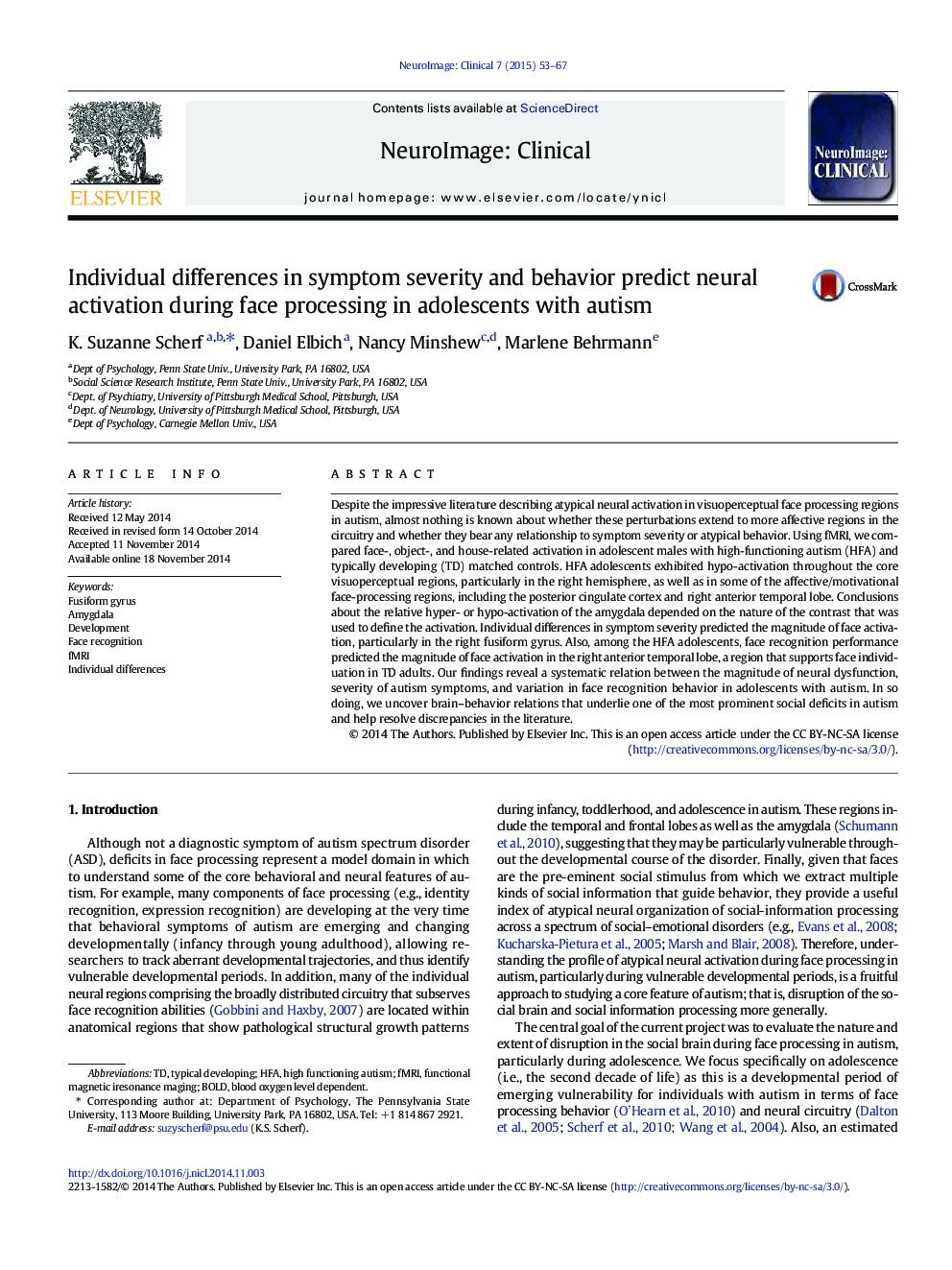| کد مقاله | کد نشریه | سال انتشار | مقاله انگلیسی | نسخه تمام متن |
|---|---|---|---|---|
| 3075057 | 1580960 | 2015 | 15 صفحه PDF | دانلود رایگان |
• Adolescents with autism exhibit weak activation in core and extended face regions.
• Fearful and neutral faces as well as objects elicit amygdala activation in TD adolescents.
• Only fearful faces drive amygdala activation in HFA adolescents.
• Individual differences in behavior predict face activation in the anterior temporal lobe.
• Individual differences in symptom severity predict face activation in the fusiform gyrus.
Despite the impressive literature describing atypical neural activation in visuoperceptual face processing regions in autism, almost nothing is known about whether these perturbations extend to more affective regions in the circuitry and whether they bear any relationship to symptom severity or atypical behavior. Using fMRI, we compared face-, object-, and house-related activation in adolescent males with high-functioning autism (HFA) and typically developing (TD) matched controls. HFA adolescents exhibited hypo-activation throughout the core visuoperceptual regions, particularly in the right hemisphere, as well as in some of the affective/motivational face-processing regions, including the posterior cingulate cortex and right anterior temporal lobe. Conclusions about the relative hyper- or hypo-activation of the amygdala depended on the nature of the contrast that was used to define the activation. Individual differences in symptom severity predicted the magnitude of face activation, particularly in the right fusiform gyrus. Also, among the HFA adolescents, face recognition performance predicted the magnitude of face activation in the right anterior temporal lobe, a region that supports face individuation in TD adults. Our findings reveal a systematic relation between the magnitude of neural dysfunction, severity of autism symptoms, and variation in face recognition behavior in adolescents with autism. In so doing, we uncover brain–behavior relations that underlie one of the most prominent social deficits in autism and help resolve discrepancies in the literature.
Journal: NeuroImage: Clinical - Volume 7, 2015, Pages 53–67
